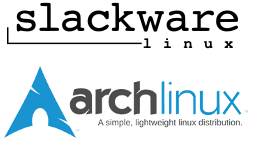Introduction
It is our firm belief that Linux, despite its advances on the desktop side, as well as on tablets, should be taught starting with the command line. That’s because it’s an operating system that borrows heavily from Unix(TM), and there was nothing more than a text interface on it at the very beginning. Studies have shown that, if applicable, one is more efficient on the command-line rather than using a graphical user interface (GUI). “If applicable” means that we’re not referring at photo/video editing or some other task that requires a graphical environment. It means that when there is a task that can be solved either via the command line interface (CLI) or via GUI, the CLI way is more efficient. Another thing to be considered is the fragmentation of the Linux world. For example, OpenSUSE’s YasT won’t be available on any other distro, so it’s a specific piece of software. This fragmentation is seen also in the CLI world, especially when it comes to the locations of various files, but we will make you aware of it, should that be the case. In case you’re not convinced yet, remember that you don’t know Linux, or any other similar operating system, until you know your way around its CLI. The power of Linux lies there, and if you want to make a career out of it, follow along: it’s an interesting and fun journey.
Internal vs external Linux shell commands
You may be puzzled by this choice of words, and with good reason. But it’s a terminology you will encounter often, along with the term “(shell) built-in” when referring to internal commands and perhaps “the rest” for the external ones. But before we go that far, let’s make sure we’re on the same page. The shell we’re gonna work with is bash, as it’s the most used on Linux distributions. That’s not saying it’s the best, but that’s a subjective term anyway. I don’t know of any popular and still maintained Linux distribution that uses any version of bash prior to 4.xx, so that’s what we will use too. Regarding the ever-controversial distribution support, LPI seems to focus mainly on Red Hat and Debian or derivative distributions (e.g. Fedora or Ubuntu), so this is what we’ll support as well. However, at this level at least, the distribution is less relevant: what is important is an up-to-date shell and distribution.





